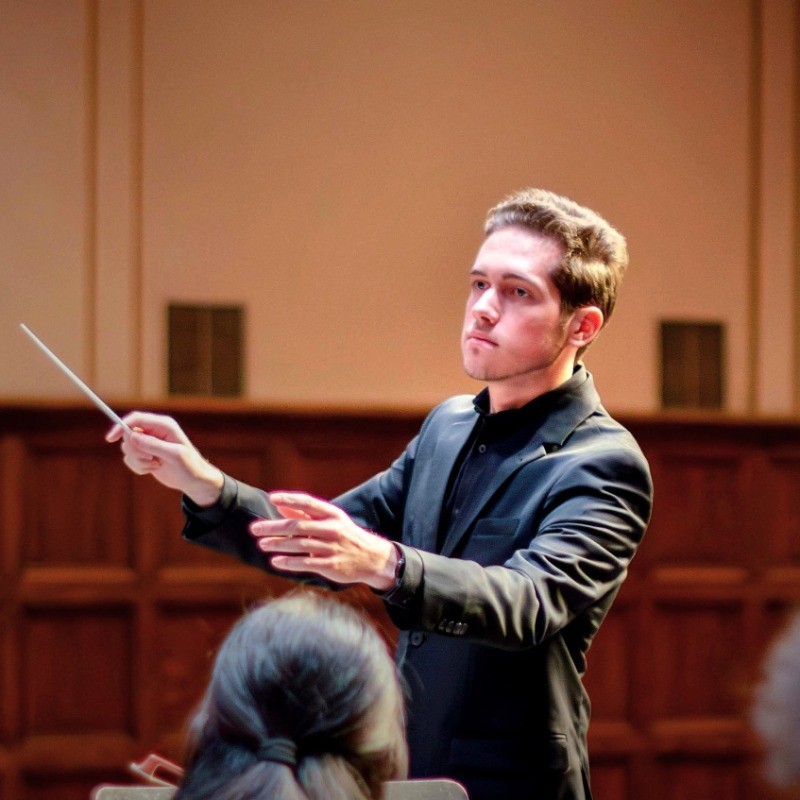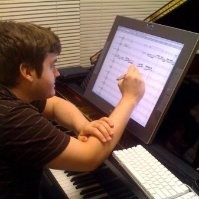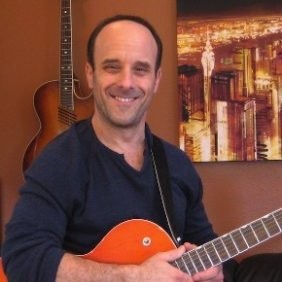https://www.kvraudio.com/advanced-soundware-realize-orchestral-brass-review
The world of sampled orchestral instruments has seen some evolution over the years, with developers constantly striving to capture the nuances and expressiveness of real-life performances, however, the traditional approach of sampling notes and articulations and stitching them together through complex scripting does come with significant limitations. Advanced Soundware’s REALIZE Orchestral Brass emerges as a game-changer in this domain, presenting a unique approach that redefines the way arrangements are created and reproduced in the digital domain. REALIZE Orchestral Brass sets itself apart from conventional sample libraries by moving beyond the limitations of individual note sampling and scripting and instead, harnesses the power of AI and a vast library of real performance phrases to generate authentic and expressive renditions of brass arrangements. This innovative approach allows composers and musicians to achieve a level of realism not previously possible with virtual instruments, at least not without a significant investment in programming articulations.
Not Your Average Orchestral Library
At the heart of REALIZE lies a massive 250GB+ sample library consisting of high quality recordings of a 13-piece brass ensemble, including 6 horns, 4 trumpets, 2 trombones, a bass trombone and tuba. This extensive sample collection, comprising over 100,000 phrases and 260,000 notes, provides the foundation for REALIZE’s unique ability to recreate the dynamic and nuanced performances of a live brass section. The library perhaps lacks a bit of the sonic signature of some of the specialised and produced offerings from companies such as Spitfire or Orchestral Tools, but the focus here is the accuracy and realism of the performances and a more sonically transparent library allows for greater flexibility too in terms of combining these brass performances with other libraries. There are also plenty of options for shaping the tone too in terms of mic positions and so forth.
REALIZE is a relatively unorthodox tool compared to traditional orchestral sample libraries and instruments, and as such, it is important to have a good grasp on its intended use and workflow. REALIZE Orchestral Brass operates in an “offline” capacity, meaning it’s not designed for real-time playing or sketching ideas. Instead, it functions as a powerful rendering engine, transforming your finished MIDI scores into polished brass arrangements. Think of it as your own personal orchestra, to whom you deliver your demo and score to before recording a live rendition of your arrangement. It doesn’t necessarily replace your current brass libraries, but rather is the cherry on top once your initial arrangement is completed, providing unparalleled realism in a fraction of the time it takes to manually program articulations.
Workflow
The workflow essentially comprises composing your piece, most likely with your existing libraries but without special attention paid to fine tuning articulations and without much consideration for things such as where players should take breaths and so forth. You then export your MIDI data as a MIDI file, including parts for the various brass sections, and then import them back into REALIZE. REALIZE’s AI engine then analyses your score and intelligently selects the most appropriate phrases from its vast library to match the melody, rhythm, and dynamics of your composition. This happens quite quickly too. It would be nice to have a more streamlined method of getting MIDI in and out of the plugin via drag and drop support if possible though. Once complete, the performance can then be fine-tuned to your preference, although in testing the AI did a pretty fantastic job of selecting appropriate phrases most of the time. A range of tools for adjusting articulations, dynamics, and even swapping individual phrases to achieve your desired sound, are on hand for those wanting to dive deep into the tweaking of performances.
This workflow eliminates the need for manual articulation programming, key switching, and program changes, which are often cumbersome and time-consuming tasks in traditional sample libraries. This is perhaps REALIZE’s greatest value proposition as the intelligent phrase selection delivers results with a realism you’d be hard pressed to find in any other virtual orchestral instrument, all in record time, and empowers you to focus on the creative aspects of your music, while the software handles the technical complexities.
Features and UI
REALIZE Orchestral Brass takes a bit of getting used to initially, but once you are accustomed to its operations, the interface is relatively clear and simple to use, divided into several key panels with each serving a specific purpose in shaping and refining your virtual brass arrangements:
The notation and information panels provide a visual representation of the phrases being used, allowing you to manipulate accents, articulations, and dynamics. Dynamics are interpreted from MIDI controller data initially but you can adjust dynamics and expression here too as well as timing, length, pitch, and articulations of each note. REALIZE boasts an impressive array of articulations, all captured with exceptional realism. From the delicate nuances of legato and portamento to the powerful impact of staccato and sforzando, the library covers a wide spectrum of expressive possibilities. The Source Sample dropdown menu allows you to select the most appropriate source sample for each note from a list of recommendations. These recommendations are based on the note’s context within the arrangement and the settings in the Notation Panel. Samples are organised into four categories: Detached, Rhythmic, Melodic, and Dynamic, each catering to different musical characteristics.
The Multi-Function panel provides access to a range of global controls for mixing and processing the performance. It includes pages for Monitoring, Routing, Balance, Sections, Microphones, and Master FX. These pages allow you to solo or mute individual instruments, route instruments to different output channels, adjust the balance between instruments, control the volume of different instrument sections, mix the volume of different microphone positions, and apply master effects such as reverb and equalisation.
Conclusions
REALIZE Orchestral Brass is a versatile tool that caters to a wide range of users. Seasoned composers will benefit from huge time savings when scoring for film and television etc.with the ability to create convincing orchestral brass mockups without the logistical and financial challenges of hiring a live orchestra. Producers with little to no experience with composing for brass can also enjoy realistic results while focusing on simply creating melodies without mastering an array of keyswitches. Regardless of your experience level or musical background, REALIZE Orchestral Brass provides an accessible and powerful platform for creating stunningly realistic brass arrangements.
Advanced Soundware’s REALIZE Orchestral Brass marks a significant leap forward in the evolution of sampled orchestral instruments. Its unique approach to sampling, coupled with its powerful AI engine, delivers unparalleled realism and expressiveness. Whether you’re a seasoned composer or just starting your musical journey, REALIZE empowers you to create realistic brass arrangements that were previously not easily attainable with traditional sampled instruments.
Pros
Realistic results with minimal input
Versatile library
Huge array of customisation options for fine tuning performances.
Unique and groundbreaking approach to creating believable orchestral arrangements.
Cons
No drag and drop support for MIDI as yet.
Availability and Pricing:
Realize Brass is available from Advanced Soundware:
All Brass Bundle – $295
Horns 1,2,3 – $145
Trumpet 1,2,3 – $145
REALIZE introduces a new way of working with samples that I think could shape the future of virtual instruments. Here are my honest thoughts after spending some time using it:
The idea of recording performances and then chopping up the phrases into individual notes creates a degree of realism that already sets REALIZE apart from most sample libraries. Though I’ve worked with a few other libraries that use a similar approach, this one stands out because of the engine built around the sampling technique and the fact that it allows for deep editing of each individual note. REALIZE offers an experience closer to working with actual players than any other library I’ve come across.
After learning the basics of how it works, the plugin is really intuitive to use and everything runs smoothly. The process is similar to preparing MIDI to send to an orchestrator for a recording session and the result is similar to getting a recording, but with a lot more flexibility–every note can be adjusted and it’s easy to go back and change things. I’ve found that it does take a bit of time to fine-tune the performance since each individual instrument needs to be separately edited (horn 1, horn 2, etc.). But luckily there are plenty of options available to improve the output like the dropdown menu where you can choose from a ton of different recordings of each note, so it’s well worth spending time with it to get the best possible result. Right now it takes me slightly longer than working with traditional sample libraries, but if the algorithm is updated in the future it has the potential to become much faster.
After editing each note, the realism of the performance is great. It can play slow and fast passages well, though there aren’t any fancy articulations like flutter tongue or mutes. It’s handled most things I’ve thrown at it including complex melodic passages with a lot of articulation switching. It also allows for a lot of flexibility with processing since each instrument was recorded individually and completely dry. The tone of the library is pretty bright, so it cuts through an orchestral mix well.
In summary, REALIZE is a super powerful and well designed tool. Though it takes some time to tweak and might not work in every context, it’s definitely a valuable addition to my template. It does a great job of bringing an existing brass mockups to life and is a good option if budget is not available for a live recording. The concept and engine are groundbreaking and I look forward to seeing them applied to more instruments in the future!
About Timothy Shortell
Timothy Shortell is a composer based in Los Angeles. He has scored an assortment of films, video games, series, trailers, and other media. He has also composed hundreds of tracks for publishing companies which have been placed in thousands of TV spots, trailers, commercials, and TV coverage for Hulu, Paramount+, Prime Video, Riot Games, BBC, ESPN, ABC, NBC, CNN, FOX, CBS, Discovery, and various international networks.
In 2022, he became the youngest composer to ever write custom music for a theatrical movie trailer at the age of 19. He received the Thomas Bergersen Grant for Young Talent from the co-founder of Two Steps From Hell and was three times awarded Occidental College’s Elinor Remick Warren Award for Significant Achievement in Musical Composition. He currently works at Hans Zimmer’s Bleeding Fingers Music.

This is truly an amazing virtual instrument. Hands down the most realistic sounding I’ve ever worked with. Very inspiring and remarkable, the brass elements really come to life with this! The ability to tweak things is nearly endless. While I haven’t tried every virtual brass instrument out there, and not an expert in the field by any means I’m still very confident that nothing even comes close to this one.
About Jarno Huhtanen
Jarno Huhtanen is a genre-bending composer who comfortably navigates between orchestral pieces, hip-hop and even blues. His compositions have been featured in hundreds of tv shows. Some of his credits include Here Comes The Boom (Columbia Pictures), The Big Bang Theory, America’s Got Talent, Dancing With The Stars, Grimm, Chicago Fire, Smash, Empire, The Tomorrow People, Nashville, Lie To Me, Shameless, CMT Music Awards etc. He also wrote a theme for a reality show “The Last Alaskans” and has custom scored dozens of tv shows and documentaries on Discovery and National Geographic.

What I love most about REALIZE is the freedom. With traditional sample libraries you must always write to what the samples can do and that is severely limiting to one’s creativity. It’s fun to compose something with basic sounds then hear the magic of realization of that. It’s almost like hearing your music performed by a real group and there is a kind of magic to that.
Nothing on the market has even attempted to challenge the idea of using multiple articulations that require significant time in of themselves to set up and execute and with those you are often left with artifacts where you can obviously hear a change from one articulation to another.
REALIZE solves those issues and creates the possibility for never before heard realism. There is a bit of a learning curve to using the software but it’s actually easier to learn than learning how to use the multiple articulation system of other libraries.
This is not a Hans Zimmer type library. This is a library for a swath of people who care about ultra-realism. If one is required to create ultra-realistic symphonic realizations this software and library are capable of doing better than anything else.
The samples themselves are also so different from what you find in other libraries and that lets you create passages that aren’t just faking it but sound like actual performances. It really feels like I am writing for live players with all the excitement and unexpected results that happen with that.
The thought and engineering that has gone into this project is awe-inspiring. This is such a step-change for samples and I can’t wait to see where it takes us. I am very excited for strings in the future.
About Matt Gates
Matt Gates is a composer for TV and film. His Credits include Blood Money (starring John Cusack and Elar Coltraine) and The CBS hit reality show The Amazing Race. Matt was born in North Little Rock, Arkansas and studied trumpet and composition at the University of Arkansas and now resides in Los Angeles. Matt is a graduate of the prestigious USC film scoring program, was a fellow in the highly selective ASCAP film scoring workshop, and won the 2004 Jerry Goldsmith award from UCLA. At USC Matt studied orchestration with Pete Anthony, Jerry Goldsmith’s orchestrator, Mark McKenzie, and John Williams orchestrator, Conrad Pope as well as composition with horror legend Christopher Young. Shortly after graduation Matt worked for Disney Theme Parks to arrange, synhtestrate and re-orchestrate the music from Finding Nemo for their revamp of 30,000 Leagues Under the Sea Ride. Since then he has scored dozens of indie and small studio films and documentaries and created music and themes for a variety of cable and network TV.

I recently had the privilege of trying out the REALIZE Orchestral Brass virtual instrument, and I must say, it’s a game-changer in the world of virtual instruments. As a composer and producer, I’ve encountered my fair share of brass libraries, but REALIZE Brass takes a fresh and innovative approach that left me truly impressed.
User-Friendly Innovation:
One of the standout features of REALIZE Orchestral Brass is its approachable learning curve. Despite being a departure from traditional brass libraries, the software’s concept quickly became clear to me, making it easy to navigate. I found that grasping the new approach was well worth the effort, as it significantly simplified the process of creating authentic brass tracks.
Seamless Sound Selection:
REALIZE Orchestral Brass boasts an extensive array of thousands of samples, which could easily overwhelm users. However, the software’s intelligent algorithm streamlines the process by seamlessly selecting the most suitable real brass samples for each note in my arrangement. This feature alone sets REALIZE Orchestral Brass apart from other Brass Virtual Instruments, allowing me to focus on the creative process rather than getting lost in sample selection.
Revolutionary Customization:
What truly sets REALIZE Orchestral Brass apart is its revolutionary ability to fine-tune, tweak, and even interchange samples on a note-by-note basis. This level of customization opens up a world of possibilities, enabling composers and producers to sculpt brass sounds to fit their exact vision. I found this feature especially invaluable in breathing life into my compositions.
Versatile Applications:
While REALIZE Orchestral Brass’s forte lies in classical, film scoring, and band material, I was pleasantly surprised to discover its versatility in various genres. I successfully integrated it into Jazz, Hip-Hop, and pop arrangements, demonstrating its adaptability beyond its intended scope.
Final Thoughts:
In conclusion, REALIZE Orchestral Brass is a cutting-edge virtual instrument that redefines the way we approach brass sound design. With its user-friendly interface, intelligent sample selection, and groundbreaking customization options, it’s a must-have tool for composers, producers, and musicians alike. Whether you’re seeking a quick and effortless solution for realistic brass rendering or aiming to push creative boundaries, REALIZE Brass deserves a place in your arsenal. After my experience with this software, it’s clear that it could easily become my go-to choice for crafting authentic and captivating brass arrangements.
Ali Lexa
Credits – Audio Producer, editor and online content manager for the Pacifica Radio Network. Former positions as digital asset manager at Sony Pictures Entertainment, MGM.com, content creator and editor for EastWest Sound Warehouse, AMG (Advanced Media Group). Product specialist and media consultant for Steinberg Music Software Gmbh. Former Sound Designer for Activision and Trimark Pictures. Remix producer and engineer on dozens of records in the dance genre. Music Director of Samba Da Mudança (Brazilian Samba Ensemble).

What impresses me most about REALIZE is the end result: a brass ensemble recording that sounds incredibly life-like, the kind of thing I’d expect from a live recording session with studio musicians. Full of life, variance, space and punch.
I own products from all the major sample libraries out there, and none of them can produce the same degree of realism, ease of use and efficiency of production as Realize.
Besides saving me loads of time and effort dealing with multiple patches and keyswitches, one feature I love is being able to alter the speed of a crescendo with a simple turn of a knob; or the ability to quickly audition dozens of sample choices on a note-by-note basis.
The sample base for this library is so vast, you can edit to your hearts content and never run out of choices (as you quickly would with any other library out there).
But who has time to tweak these days with the tight deadlines we all have? That’s why I love the fact that the out-of-the-box performance provided automatically by the software is more often than not pretty close to what I want.
Having all the articulation choices, keyswitches, etc. happening automatically behind the scenes is an absolute game changer.
Bottom line: if you’re looking for ultimate realism and ground-breaking relief from endless keyswitches, multiple tracks and searching for the right articulation, this is what you’ve been waiting for.
Source: Two-time Emmy-winning composer, Ron Komie.
Credits: The Amazing Race, The Voice, The Late Show with Stephen Colbert, Pawn Stars, and many others.
